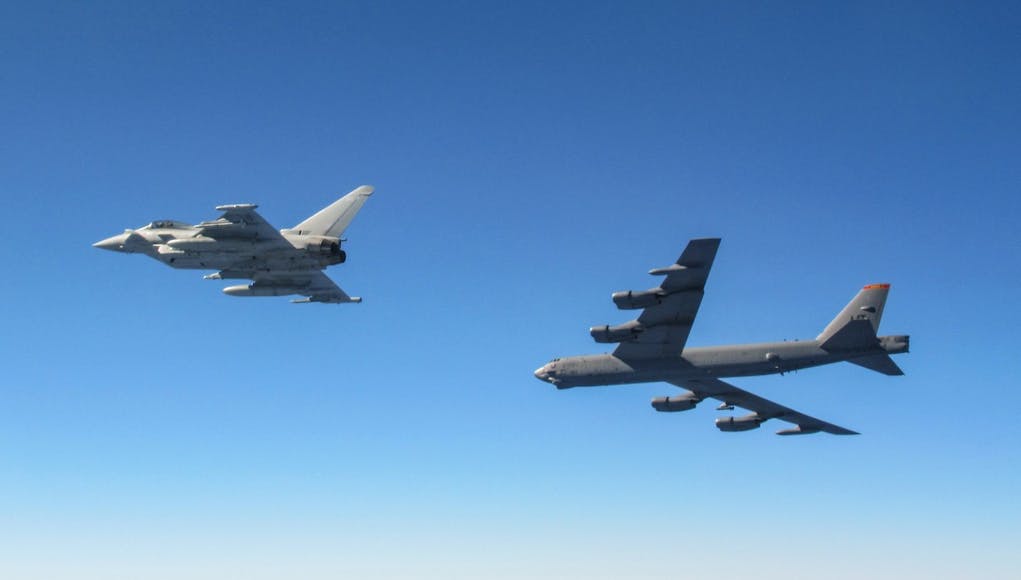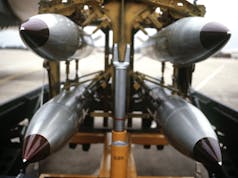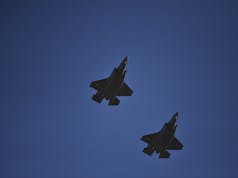The ongoing conflict in Ukraine has made it clear just how vital air superiority is for NATO in any military engagement.
General James Hecker, Commander Allied Air Command, has made clear that achieving air superiority is crucial for the success of air operations.
In the upcoming live-fly exercise, Ramstein Flag 2024, scheduled for October in Greece, air superiority will be a primary focus for participants from 13 Allied nations. “Training Allied forces to establish air superiority is a key requirement,” said General Hecker.
He pointed out that deterrence by denial is essential and relies on well-equipped and trained forces that can succeed in combat. “The air component does not simply pursue air superiority for its own sake,” he explained in a recent commentary for U.S. Air University. “Air superiority is not just the first thing we work toward; it typically remains our top priority.”
Historical examples, such as the combined bomber offensive in World War II, show the severe costs associated with a stalemate in the air. General Hecker warned that any operational changes must not limit the air component’s freedom to act or its ability to support ground operations.
He added, “When asking what force posture provides a credible deterrent, the answer is to be able to readily demonstrate that NATO possesses the forces it would take to forcibly deny the adversary their objectives.” This approach is particularly important, as authoritarian regimes may not be deterred by global disapproval of military actions.
General Hecker also discussed the need for a balanced effort, noting that NATO countries cannot rely solely on high-end military capabilities. “The proliferation of low-cost threats makes engagement with high-end weapon systems unsustainable,” he cautioned.
“Our Alliance has tangible strengths in this area,” he concluded, highlighting the diverse capabilities derived from various national defence industries. Achieving interoperability from the beginning is crucial for maintaining NATO’s effectiveness in operations.
For more insights, you can read the full article here.














He is afraid that missiles take over his shining aircraft that takes 30 years to develop, costs billions and decades to reach full operational capability.
Oh and can only be build about an hundred a year.
Nothing else achieves air superiority than the inherent flexibility of air power.
fabulous summary Robert!
Short and sweet. Hope you are well mate.
tickety boo Sir- spring has sprung here in NZ (well, kind of).Trust all is good in your world Robert .
I have the post holiday blues after a fabulous trip to the States to be honest. First world problems eh. ha.
lucky man!😃
Interestingly seems that Airbus and Lockheed drop out of UK medium helicopter competition.
Surprised being first to get news here. Was this posted already? Did not found it.
So Leonardo with AW 149 is the only one.
I am surprised that the Journal hasn’t covered this story. As it is pretty significant. Both the Airbus and Sikorsky statements says they can’t meet the UK requirement. Which I think is down to the workshare agreement. But probably also includes the rumored cut to 25 airframes. Which makes the work share untenable.
the UK should make delivery and manufacturing needs in every deal it makes.
No, I too was surprised there was no article here.
Make an offer to the Aussies to buy their second hand NH90s.😉
No thanks!!
cant blame you guys for that! 😅
Croatia HIMARS posted but this one not make it even more strange.
AW149 has already been choosen
Source?
Probably since the competition began.
Awaiting the inevitable
cut to airframe numbers
This is not entirely relevant, but I don’t know when an appropriate article would come up for me to ask this:
What is the heaviest anti-ship missile that could be fired from a FFG/DDG’s Lynx, and then which is the heaviest that could be fired from a Merlin?
Lynx maybe Marte MK2- it was fired from AB-212(Italian variant of Huey with 2 PT6 engine). This missile have had lots of variants from 1970, so i don’t know what is the weight of last recent version.
Merlin, maybe Exocet.
The Italian Navy use the Marte 2 from their Merlins. It don’t believe anything heavier has been trialed. As Merlin has a similar lift capability as the Super Puma, it should be able to carry a pair of Exocets.
Our Merlins are not equiped to use any weapons other than lightweight ASW torpedos & machine guns. Our “Lynx” are Wildcats now & the Lynx is retired.
Interesting times.
How many drones can you buy for the cost of one attack helicopter?
What’s the cost of the fast jet strength of the Russian Air Force versus the cost of the Ukrainian air defence systems which keep them out of the skies of Ukraine?
How does stealth impact the viability of ground based air defence?
What’s the economics of building large quantities of cheap drones versus the economics of manufacturing expensive SAM’s?
Certainly needs thinking about. I’m not sure a reiteration of what went before is going to cut it.
That is one of main questions. Note that the costs are not only the device: it is the the training, , production, upgrades, replacements and how fast can you cycle all of that and how much you can increase production.
For me one of the major problems i see with aircraft is that a 1000-10000 euro drone can destroy a +100M(including training and everything else) one in airbase that is known its location, and getting replacements are a problem even outside the cost equation.
In the past you had more bullets than enemy soldiers, now you can have more drones than enemy soldiers.
looking at the dismal performance in the Ukraine, NATO will have air superiority without even launching a aircraft.
Obvious statement, but a reminder not for NATO to take it eye off the game. Imagen that Russian column outside Kiev if it had been facing a Nato force
Air superiority is the essential cornerstone in any peer conflict. If the enemy cannot achieve parity in the air, all its land forces, lines of communication, military installations, manufacturing plants and strategic civil sites are going to be rapidly degraded by NATO air.
We are apt to look on Russia as the main threat and take comfort from Russian air’s less than stellar performance in Ukraine, plus their failure to get a 5th generation aircraft into production. But the military planner has to factor in that the threat that the West may in future face a new autocratic axis, led by China and including Russia, North Korea, Iran and others. In that event, numbers are as critical as advanced technology, and NATO should be able to afford both.
One major concern for the UK is the steady decline in the number of our combat aircraft. We are expected to be the backstop for air operation in Scandinavia and the North Gernan Plain, as well as a significant force in Eastlant and overseas. Our combat air numbers are now far below what would be needed to fulfill any one of these requirements, let alone all 4.
We have steadily fallen down the NATO combat air league table and now look like a bit player. Once the Typhoon F2s are withdrawn next year, combat air numbers in the principal European nations will be:
Turkey. 253
France. 233
Germany 232
Greece. 227
Italy. 180
Spain. 152
UK. 144-151
Poland. 97
All have orders for new 4th and 5th generation aircraft, including F-35, Typhoon and Rafale, to replace older Tornados, F-16s etc.We bumble along with the glacially slow procurement of a very limited number of the most expensive and least capable F-35 variant, which seems to be taking forever
We cannot continue to run down our combat air numbers. Almost every other nation on the list is increasing their combat aircraft fleet. They all seem able to run their aircraft for 30 years or more, to upgrade them and replace them in a timely way, to procure 8 or more aircraft a year. We go the other way, scrapping still-useful assets like Typhoon F2 or retiring them years before any other user, like the Tornado FGR4, struggling to procure more than 6 aircraft a year and failing to replace those withdrawn from service, all in the endless drive to cut expenditure.
The civilians running the MOD procurement arm channel their efforts, enthusiasm and a big chunk of the budget into new transformational capabilites, like Cyber, cloud-based C4, satellites, drones and future missiles. All very good, but they have no concept of the need for numbers in wartime. Their long list of desired.wunderbar weapons cannot continually be at the expense of armed force numbers and the essential equipment needed to maintain our very limited military capability. Someone needs to educate them about the critical need for mass in wartime.
We should retain 24 of the Typhoon F2s, giving them a limited upgrade, like Spain has done, enough to equip an interceptor squadron until Tempest comes along. We should order a further batch of 20 of the latest Typhoons, the Tranche 4 with the ECRS radar. We should set a target of procuring 8 combat aircraft a year, not 7, 6 or a handful. All this could be done with a 20% increase in the combat air budget, I.e. £360m pa, if defence spending gradually rises to 2.5% of GDP over the next decade.
Significant and continuous pressure needs to be put on Healy and Reeves to live up to their election promises ref the defence budget.